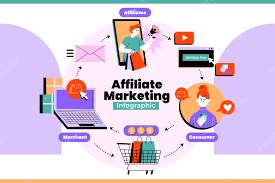
A website is a collection of interconnected web pages that are accessible via the internet. It is a digital space that represents your brand, providing a platform to showcase products, services, and information to a global audience. Comprised of various elements such as text, images, videos, and interactive features, a well-designed website serves as a central hub for online activities related to your business.
In the modern business landscape, establishing a strong online presence is crucial for success. A website acts as a digital address where potential customers can find and learn more about your business. It offers an opportunity to create a lasting first impression, as visitors often form judgments based on their initial interaction with your website. By ensuring an attractive design, intuitive navigation, and compelling content, you can engage and captivate your audience, ultimately converting them into loyal customers.
A website allows you to effectively showcase your products and services to a global audience 24/7. With the ability to present detailed descriptions, high-quality images, and even videos, you can create a visually appealing and informative representation of your offerings. This not only helps potential customers make informed purchasing decisions but also serves as a valuable resource for existing clients seeking additional information or support.
A professionally designed website instills trust and credibility in your brand. In an era where online scams and fraudulent activities are prevalent, a well-established website acts as a testament to your legitimacy and reliability. By incorporating customer testimonials, case studies, certifications, and security features, you can foster a sense of trust and build strong relationships with your target audience.
Unlike a physical store, a website has no geographical limitations. It enables you to transcend borders and reach customers across the globe, significantly expanding your market reach. With the right digital marketing strategies, search engine optimization, and social media integration, your website can attract targeted traffic and drive conversions, thereby opening up new business opportunities that were previously inaccessible.
To create the perfect website for your business, it is essential to consider various factors and implement effective strategies. In this article, we will discuss six valuable tips that will help you create an impressive website that engages visitors and promotes your business effectively.
Define Your Goals and Target Audience
Before diving into the design process, it is crucial to define your website's goals and identify your target audience. Consider what you want to achieve with your website. Are you aiming to generate leads, increase sales, provide information, or build brand awareness? Understanding your goals will guide the entire website creation process.
Additionally, identify your target audience and tailor your website's design and content to appeal to them. Research your audience's demographics, interests, and online behavior to create a website that resonates with their needs and preferences. This knowledge will help you choose the right design elements, tone of voice, and overall user experience.
Focus on User Experience
User experience (UX) is a critical aspect of website design. A seamless and intuitive user experience keeps visitors engaged, encourages them to explore your site, and increases the chances of conversion. Ensure that your website is visually appealing, easy to navigate, and loads quickly across different devices and browsers.
Organize your content logically and make it easily accessible. Utilize clear and concise headings, menus, and call-to-action buttons to guide users through your website. Implement responsive design techniques to ensure a consistent experience on mobile devices. Regularly test your website's usability and make improvements based on user feedback.
Craft Engaging and Relevant Content
Compelling content is the backbone of any successful website. Create high-quality and relevant content that addresses your audience's needs and interests. Incorporate a mix of text, images, videos, and interactive elements to make your content more engaging.
Develop a clear and concise messaging strategy that communicates your brand's unique value proposition. Use persuasive language and storytelling techniques to captivate your visitors and encourage them to take the desired actions. Regularly update your content to keep it fresh and informative, and consider starting a blog to share industry insights and establish your expertise.
Optimize for Search Engines
Search engine optimization (SEO) plays a vital role in improving your website's visibility in search engine results. Conduct thorough keyword research to identify relevant terms and phrases that your target audience is likely to search for. Incorporate these keywords naturally into your website's content, titles, headings, and meta tags.
Focus on creating high-quality backlinks from reputable websites to improve your site's authority. Ensure that your website's structure is search engine-friendly by optimizing page load times, using clean URLs, and implementing XML sitemaps. Regularly analyze and refine your SEO strategy to stay ahead of your competition.
Integrate Social Media and Sharing Features
Social media platforms provide an excellent opportunity to expand your online presence and engage with your audience. Integrate social media buttons into your website to encourage visitors to follow and share your content. This helps to increase brand awareness and drive traffic to your website.
Consider adding social media feeds or live chat options to enhance interactivity and foster a sense of community. Regularly update your social media profiles with relevant content and encourage your website visitors to connect with you on these platforms.
Analyze and Improve
Once your website is live, it is crucial to analyze its performance and make data-driven improvements. Utilize web analytics tools like Google Analytics to track user behavior, measure conversions, and identify areas for enhancement.
Regularly monitor your website's loading speed, broken links, and mobile-friendliness to ensure a seamless user experience. Analyze user feedback and conduct A/B testing to refine your design, content, and functionality. By continuously optimizing your website, you can stay ahead of the competition and provide an exceptional online experience for your visitors.
In conclusion, creating the perfect website for your business requires careful planning, attention to detail, and a focus on delivering an exceptional user experience.
By defining your goals, understanding your target audience, focusing on user experience, crafting compelling content, optimizing for search engines, integrating social media, and analyzing and improving your website's performance, you can create a website that effectively represents your brand and drives business growth.
Embrace these tips, adapt them to your specific business needs, and watch your website become a powerful tool in achieving your online success.























